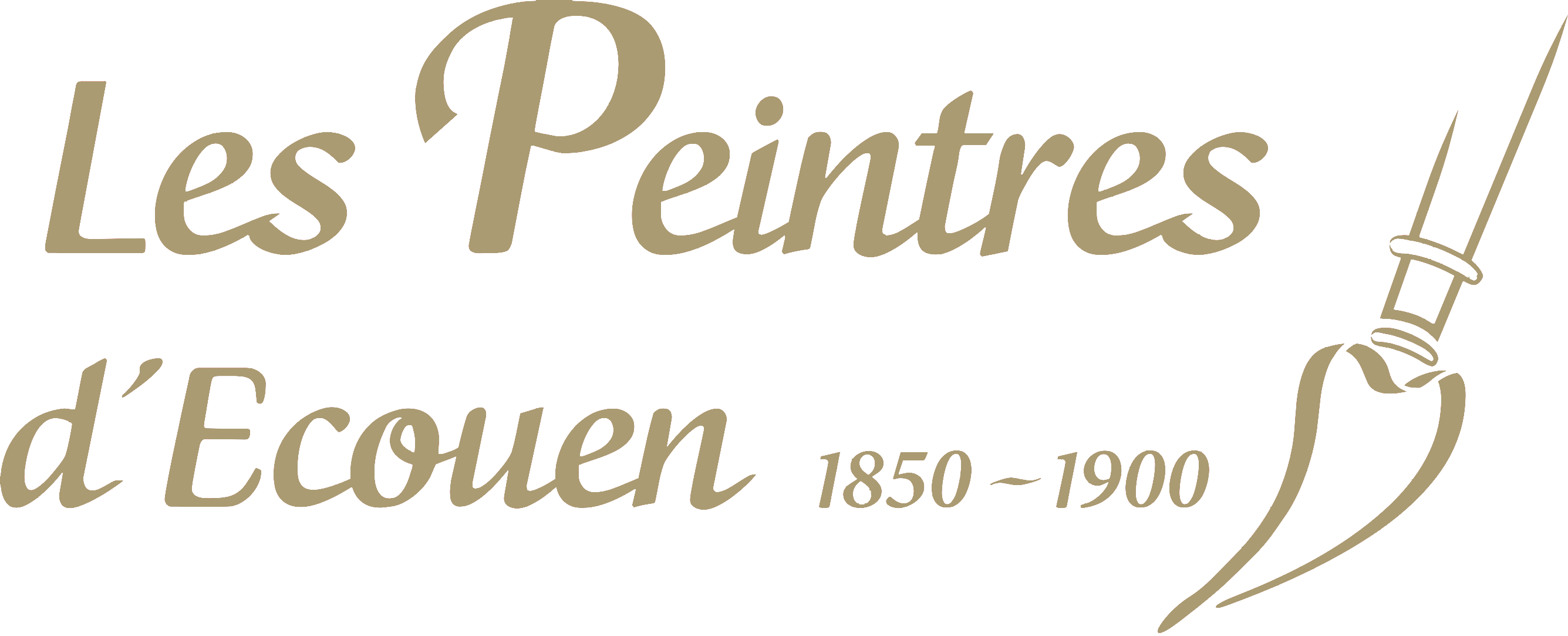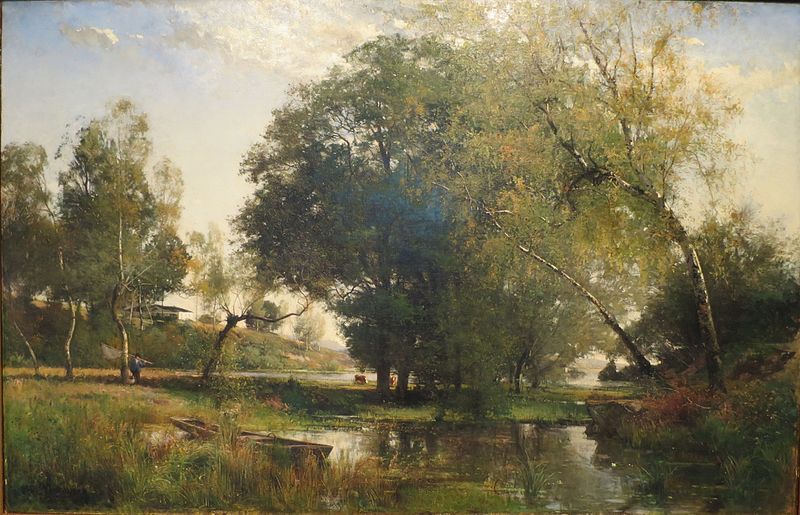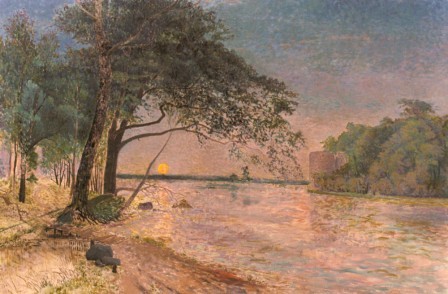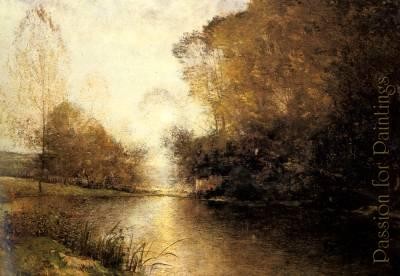Stockholm, February 13th 1834 – October 4th 1906, Tranas (Sweden)
Alfred Wahlberg was born on February 13, 1834, in Stockholm to a painter father and a sculptor mother. After showing an early talent for music, although influenced by his father’s painting, Alfred Wahlberg entered the Royal Academy of Music where he studied piano and clarinet. After his studies, Alfred Wahlberg joined the « Göta Gardes Musikkar » orchestra and gave piano lessons for a living.
After attending the Royal Swedish Academy of Arts, in 1857 he moved to Düsseldorf to enter the Kunstakademic. He was a student in the class of Hans Fredrik Gude (1825-1903).
Before returning to Sweden, he traveled to the Netherlands and Belgium to complete his training. Back in Sweden in 1862, he painted his most famous picture « Svenskt insjölandskap fran Kolmarden« , which is exhibited in the National Museum of Art.
He arrived in Paris in 1866 and participated in the World’s Fair the following year. At the 1868 Salon, he exhibited a sunset « View taken on the coast of Bohulän, Sweden » and a moonlight « View taken at Fjällbacka, on the coast of Bohulän« . He won medals at the Paris Salons of 1870 and 1872.
A specialist in Swedish landscapes, he was present at the 1878 World’s Fair where he received a first class medal. He was named Chevalier de la Légion d’Honneur in 1874 and promoted to Officer in 1878.
In 1896, he lived in rue de Paris, in Ecouen.
The famous writer Théophile Gautier (1811-1872) praised him. He was a friend of Pierre Edouard Frère (1819-1886) in Ecouen as well as of Charles François Daubigny (1817-1878) and Léonide Bourges (1838-1909) in Auvers-sur-Oise. His name is found on an etching by Léonide Bourges dedicated to Daubigny.
Almost every summer, Alfred Wahlberg made short trips to Sweden to study nature.
He died on October 4, 1906 in Tranas (Sweden).
For more information, we invite you to read the book « L’Ecole d’Ecouen – une colonie de peintres au XIXe siècle ».
For further information, please read the book “L’Ecole d’Ecouen, une colonie de peintres au XIXe siècle” (bilingual French-English).



